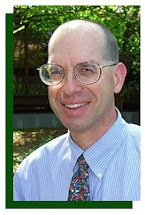This past week I found a small bird nest along my driveway. It was very small, about 1.5 inches in diameter, and my wife and I first thought it might be a hummingbird nest. It had soft plant material inside and lichens all around the outside.
I asked staff in the Wildlife Division in the Department of Conservation about the nest. They guided me to look up the blue-gray gnatcatcher. That's it! The Department also has an information page about the blue-gray gnatcatcher.
The Department of Conservation has experts that can help answer a wide variety of fish, forest, and wildlife questions. You can ask a question online, or contact your local office. There are eight Department regional offices in Missouri. You can also look up specific staff and subject areas on the Department's media contacts roster.
A wide variety of information that can help answer questions is available on the Department's Web pages and in the online articles from the Missouri Conservationist magazine.
Friday, November 30, 2007
Tuesday, November 20, 2007
You Can Make a Difference for Conservation in Missouri by Planting a Tree or Many Trees
 In 1992, when my boys were still in elementary school, we planted some trees that we ordered from the Department of Conservation's forest nursery. We planted a variety of trees, but one of my favorites is the bald cypress. One bald cypress that we planted is nearly 40 feet tall today. It started out less than one foot tall and the boys poked it in the ground in the front yard.
In 1992, when my boys were still in elementary school, we planted some trees that we ordered from the Department of Conservation's forest nursery. We planted a variety of trees, but one of my favorites is the bald cypress. One bald cypress that we planted is nearly 40 feet tall today. It started out less than one foot tall and the boys poked it in the ground in the front yard.It grew quickly. If you would plant one next spring, it could be over 20 feet tall in less than 10 years.
I like the bald cypress. It is found mostly in the bootheel region of southeast Missouri, but it can adapt and grow well even on dryer upland areas, like yards and hillsides, all over the state. Bald cypress trees can live a long time. The tree we planted could still be living in 600 years.
That's a long time to make a statement and make a difference by simply planting a tree.
Missourians think planting trees is important. In a statewide survey in 2003, most Missourians, 82 percent, agreed that the Department of Conservation should help private landowners who want to restore native communities of plants and animals.
You can learn more about the Department of Conservation tree nursery program that offers Missouri residents a variety of seedlings for reforestation, windbreaks, erosion control, and wildlife food and cover. Much more information about forests in Missouri is available on the forestry library pages of the Department of Conservation.
Or you can learn more about using native plants for landscaping or other wildlife benefits on the Grow Native! Web pages.
Tuesday, November 13, 2007
Deer Harvest Map and Totals for Missouri on Department of Conservation Web Pages
A post in the Fresh Afield blog yesterday on the Missouri Department of Conservation Web pages showed a link to a map that has the overall total deer harvest in Missouri and the harvest for each county.
The state and county totals are updated from the Department's Deer and Turkey Telecheck system, which is an online and telephone checking system to report harvest.
In checking the map page again while writing this, I've watched the deer harvest numbers go up, both for the statewide total and for Callaway County where I live.
I'll use a phrase another Department of Conservation biologist frequently uses when describing really interesting things, "How cool is that?"
You can learn more about deer hunting in Missouri and the other kinds of fall hunting opportunities on the Department of Conservation Web pages.
The state and county totals are updated from the Department's Deer and Turkey Telecheck system, which is an online and telephone checking system to report harvest.
In checking the map page again while writing this, I've watched the deer harvest numbers go up, both for the statewide total and for Callaway County where I live.
I'll use a phrase another Department of Conservation biologist frequently uses when describing really interesting things, "How cool is that?"
You can learn more about deer hunting in Missouri and the other kinds of fall hunting opportunities on the Department of Conservation Web pages.
Labels:
deer,
hunting,
missouri,
missouri department of conservation,
technology
Subscribe to:
Comments (Atom)

